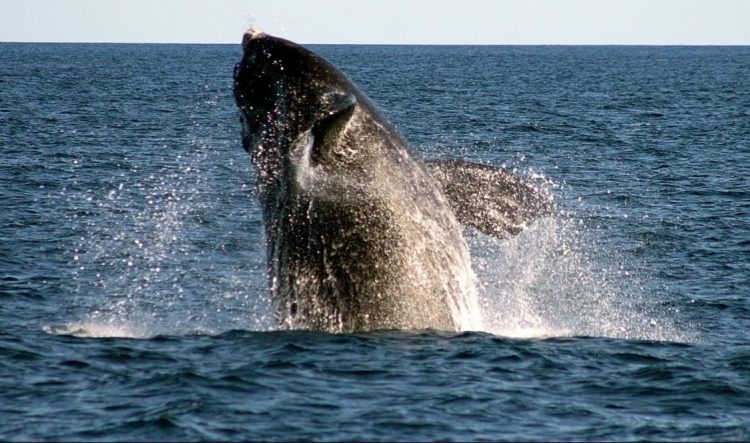A bad year for the already struggling North Atlantic right whale has everyone concerned with its survival eager to respond. But even with the clock ticking, it would be wrong to act out of panic, or just for the sake of taking action.
That’s why we’re glad to see that Maine will receive a $700,000 federal grant to investigate what role the lobster industry in the Gulf of Maine might be playing in the surge of deaths among the ocean behemoths. With fishing gear entanglements one of the factors in the rising mortality, the industry is facing calls from some scientists for new regulations. But no concrete evidence has yet linked the deaths to lobstering, and no new rules should be put in place unless it has.
The National Oceanic and Atmospheric Administration grant will fund a three-year project to collect data on how and where fishing gear is used throughout the Gulf of Maine. It is part of an investigation launched after the 2017 deaths of 17 right whales, reducing the overall population to about 450.
Some scientists are arguing that unless more-stringent restrictions are placed on the U.S. fishing industry, including Maine’s lobstermen and women, right whales will reach “functional extinction” – with too few breeding females to survive – in years, not decades.
But the situation on the water is not that clear. While fishing gear entanglement and ship strikes are part of the problem, they don’t tell the whole story, and it isn’t anywhere near certain that additional regulations on the lobster industry would save any whales.
Of the 17 dead right whales located last year, five were found in the United States. One was struck by a ship, and the cause of death of the remaining four is undetermined. None of the deaths has been tied to the lobster industry, state and industry officials say.
In contrast, several of the whale carcasses found in Canada had been entangled in snow crab fishing gear, leading Canada to announce new regulations.
Canadian regulations have been more lax than those in the United States, and that may be part of the problem.
Warming temperatures in the Gulf of Maine mean that the zooplankton consumed by right whales is moving northward, into the less-regulated Gulf of St. Lawrence. As the right whales move there in search of food, they may be more likely to be hit by a speeding boat or get caught in fishing gear.
Or, the whales may be too worn out by the longer journey, or by fighting through gear, to mate in sufficient numbers, another idea being floated.
It is important that we understand whether and how much each of these factors is playing into the rising mortality rates for right whales, particularly when Maine’s $434 million lobster industry is at issue.
Regulations work – they helped restore the right whale population when it fell to 295 in 1997. But they shouldn’t be pursued unless we are certain they can make a difference.
If lobstering is not killing right whales, then new rules on lobster fishing will do nothing to save them, and ultimately, saving right whales is the goal.
Send questions/comments to the editors.



Comments are no longer available on this story